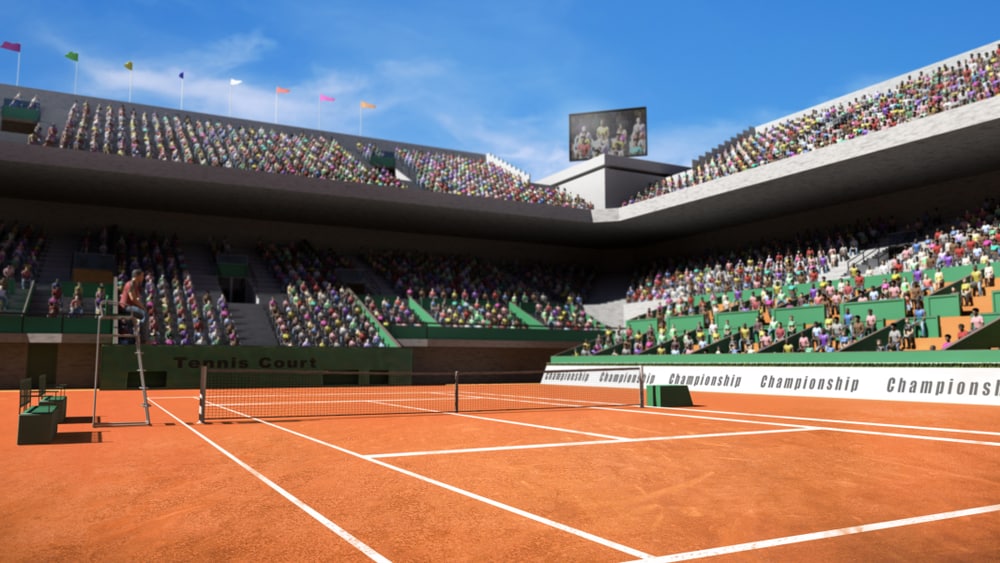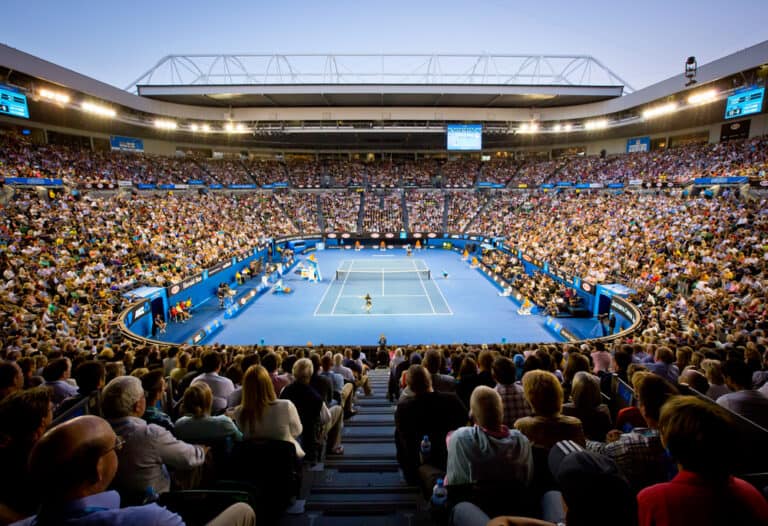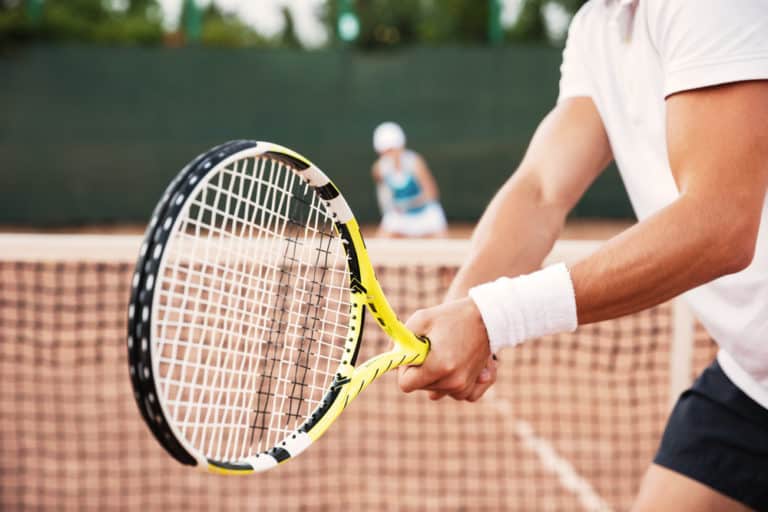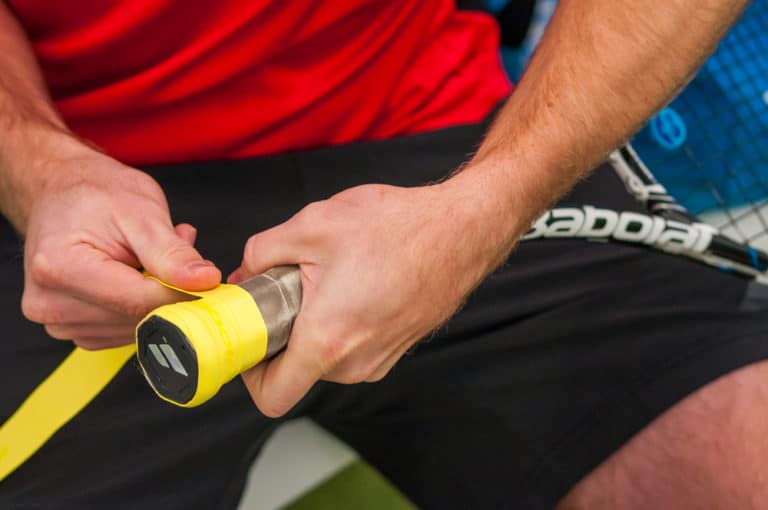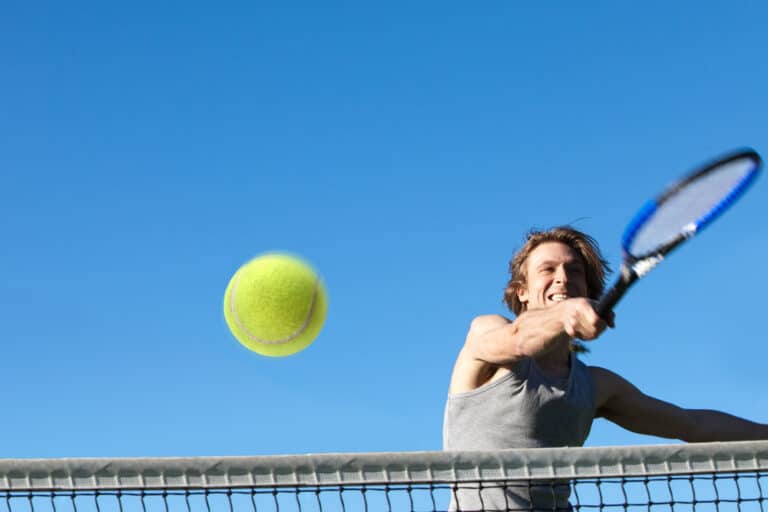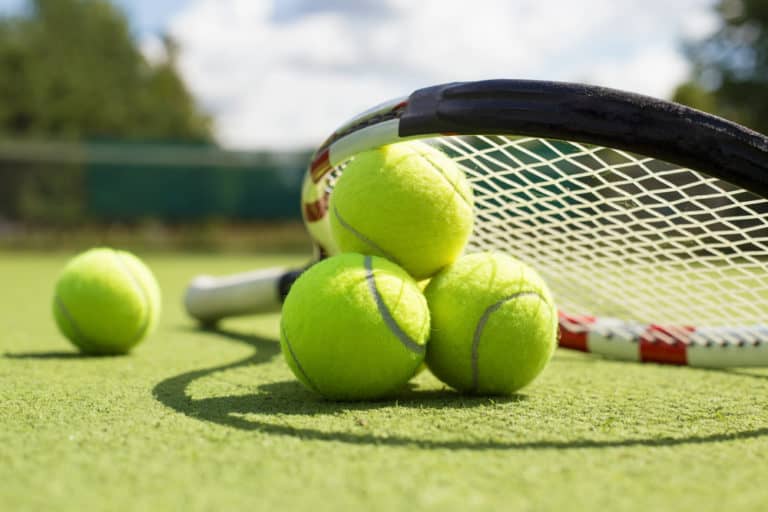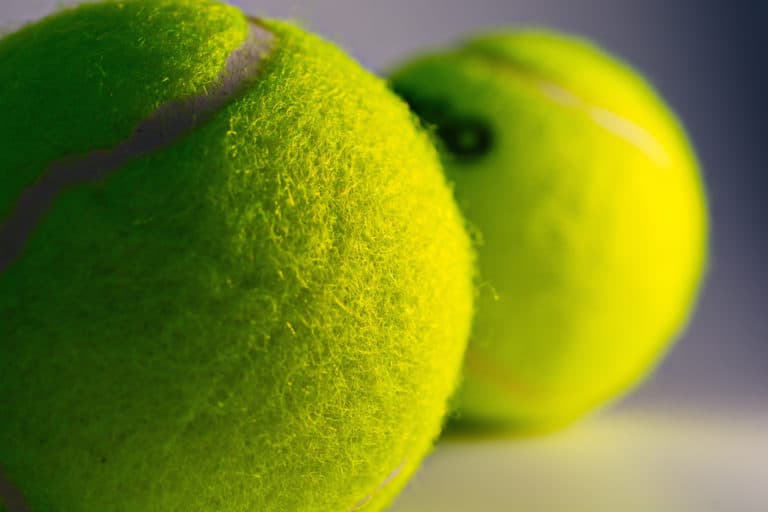What Is The Slowest Surface In Tennis?
Tennis is a game played on three types of courts; grass, clay, and hard courts. Each court demands a certain skill set from a player, as they are quite different in the way they play. Out of the three main types of tennis courts, you may wonder which surface is the slowest?
The slowest surface in tennis is the clay court. The International Tennis Federation (ITF) rates the speed of a court by using a measuring process called CPR (Court Pace Rating), where they classify types of courts according to the speed of the surface. Clay courts are classified as the slowest surface.
Clay is the slowest surface played on during the ATP tour. Players who excel on these surfaces are typically fast-moving (nippy) players who possess a strong defensive and attacking game. Clay court specialists need to be super-fit, as rallies tend to last much longer and are typically players with excellent footwork – think Rafael Nadal – and you get the picture.
The Slowest Surface In Tennis
As mentioned above, the three types of surfaces that professional tennis players compete on are:
- Grass
- Clay
- Hard
The four majors are played on these surfaces, namely:
- Australian Open (Hard)
- Wimbledon (Grass)
- Roland Garros (Clay)
- US Open (Hard)
The ITF – International Tennis Federation – rates the pace of a tennis court via a measuring system called Court Pace Rating (CPR). The CPR system uses various measuring apparatus to measure the overall effect a court surface has on a ball and generally how fast a court “plays.”
The CPR system also tests factors like the change in velocity when the ball makes contact with said surface, the time between successive bounces (known as vertical restitution), and the overall speed of the ball when playing on the surface measured by a piece of equipment known as a Sestee.
The ITF then assigns a certain number to a specific playing surface:
- 1 – Slow
- 2 – Medium-Slow
- 3 – Medium
- 4 – Medium-Fast
- 5 – Fast
The clay courts on which the French Open is played are rated a 1 (Slow) by the IFT, making them the slowest surface in tennis. The courts at the Australian Open are rated a 4 (Medium-Fast), the US Open courts a 2 (Medium-Slow), and Wimbledon the fastest with a rating of 5 (Fast.)
As a surface, the clay composition normally slows down the speed of a tennis ball. However, it bounces much higher than on other playing surfaces.
What Makes Clay Courts So Slow?
All the clay courts at this level will mostly play the same when playing on the ATP Tour. The reason is that the surface is constructed with the following typical composition:
- Redbrick Dust: 1 to 2 mm
- Crushed White Limestone: 2.6 to 2.8 inches
- Coal Residue (Clinker): 2.8 to 3.15 inches
- Crushed Gravel: Minimum of 11.8 inches
- Drain
The method of laying a clay court, the underlying surface, and the substrate used can differ from court to court. However, due to the typical composition of a clay court, the surface will play slowly.
A tennis ball grips on a clay surface, taking off a lot of speed due to friction, whereas a ball tends to skid off the grass, hence the difference in speed.
What To Expect When Playing On A Clay Court?
Playing on a surface primarily made out of ground-up brick and stone can present some unique challenges to players. Expect the following when stepping onto the red (green if you play in the States) court:
- First, there’s the higher bounce created by the surface, so players have to adapt their shot-making to deal with a considerably higher bounce than found on hard and grass courts. Ideal for players who uses a western/topspin grip.
- Secondly, the slower pace of the court typically leads to much longer rallies, as the slowed-down pace of the ball gives the player’s more time to return and defend against attacking balls. Balls that would have been winners on other surfaces won’t result in winners here.
- Fast players, who are good defensively, will perform well on the clay. Players who rely on a heavy serve, and big forehands, will see their weapons nullified a bit. It would be best to be especially fit when playing on the “red stuff” as points and matches tend to be longer.
- Many players believe that clay is the hardest surface to play on as it tests a player’s all-around game. You need a wide variety of shots to succeed on this surface and will be found out if one of them is below par.
- Unforced errors also play a big role in matches as players have to go for big shots to hit outright winners. It’s the most uneven of all the courts; don’t expect a consistent bounce, especially not if the ball hits a line (they react weirdly.)
- The lines on a clay court aren’t painted on; it’s made from a different material, and when balls make contact with the lines, it often results in the ball reacting inconsistently; often leading to “free” points for the attacking player.
- Clay courts are slippery, so changing direction involves pushing off, and it can take a while to get the hang of mastering perfect movement on this surface. Sliding into shots is common and encouraged, as it’s part of the requirements of any great clay-court player.
- Clay courts are not as hard on the body as when you play on hard courts. Ask 14-time French Open Champion Rafael Nadal which surface he prefers. Clay might be the slowest surface to play tennis on, but it might be the hardest to conquer.
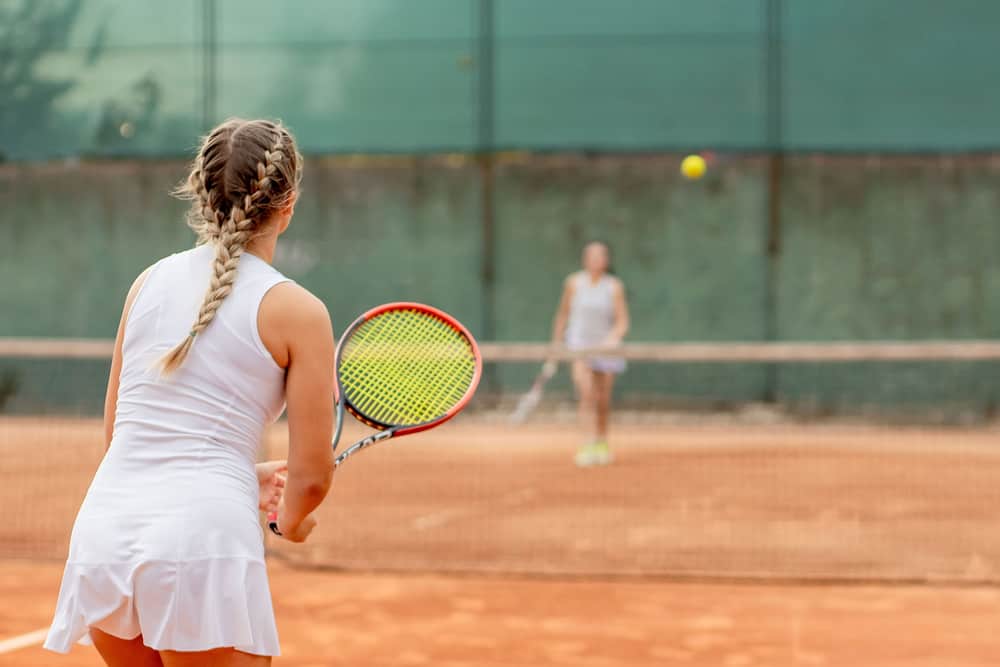
Why Are There So Few Clay Courts In The USA?
Think of a clay court, and a picture of red Roland Garros’s clay-court should pop into your mind’s eye. If you are European and from South America, you will be used to playing on red clay. Not so much if you’re American.
Americans play on green clay courts known as Har-Tru. These courts are made from billion-year-old metabasalt found in the Blue Ridge Mountains of lovely Virginia. The natural stone is green in color, very hard, and angular in form.
The red clay found in South America and Europe is a natural form of clay, whereas natural clay isn’t found in the States. Importing natural clay from around the world is an expensive exercise. That’s where Har-Tru came in with an alternative solution.
Both surfaces drain water well, with Har-Tru drying a little faster and playing a little faster due to its more compact construction. These courts have similar bounces, and the green clay also slows the ball down on impact.
You will find it more slippery to play on Har-Tru courts, and changing direction is a little tougher than on a natural clay surface. The cost of maintenance is also cheaper with a Har-Tru court than a natural red clay court and less time-consuming.
How Long Is The Clay Court Season?
The ATP clay-court season starts at the end of January with the Cordoba Open (ATP 250 Event), held in Argentina, won by Albert Ramos-Vinolas, and concludes at the French Open on the 5th of June.
After the conclusion of the French Open, there are still some ATP 250 clay tournaments played in July. The clay-court season features the following number of tournaments:
- ATP 250: 14 Tournaments
- ATP 500: 3 Tournaments
- ATP 1000: 3 Tournaments
- Grand Slam: 1 Tournament
The bulk of the tournaments is played in Europe, followed by South America.
Conclusion
Clay courts may be slow; however, many pro-tennis players rate this surface the hardest to play on. Clay is a surface that forces players to adapt their game according to the surface and its characteristics.
The ball is in play for longer, a big serve is partially nullified, and winners are hard to come by. Some players struggle to play on clay, especially if they aren’t exposed to them from a young age.
References
- https://www.perfect-tennis.com/tennis-court-surfaces-and-court-speeds/
- https://www.itftennis.com/en/
- https://en.wikipedia.org/wiki/Clay_court#:~:text=Clay%20courts%20are%20considered%20%22slow,as%20there%20are%20fewer%20winners.
- https://www.atptour.com/en/tournaments
- https://hartru.com/pages/clay-courts
- http://www.physics.usyd.edu.au/~cross/PUBLICATIONS/52.%20SpeedAndBounce.pdf

